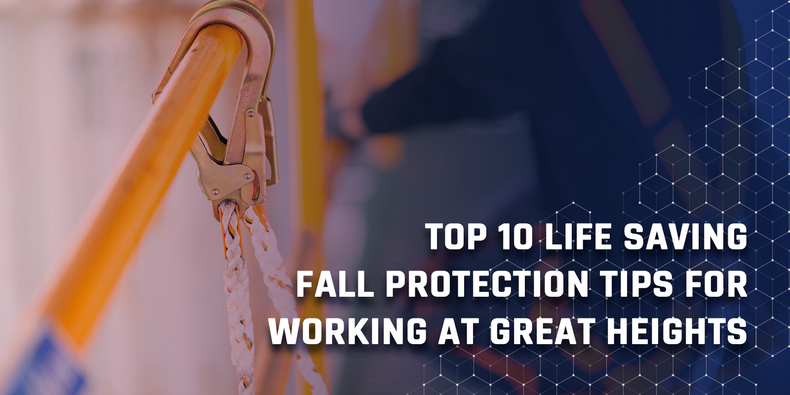If you are working at great heights, you don’t want to mess around when it comes to safety. Here is a list of ten common safety concerns that will come up in these types of jobs.
1. You Can Eat Organic Food, But Use Synthetic Lifelines
Vertical Lifelines need to be made of synthetic materials to keep you safe and to meet OSHA standards. This is because they are more resistant to weather conditions and the elements. Your Synthetic Vertical Lifeline should also have a Max Arresting Force of at least 900 lbs.
2. All Carabiners Should Be Locking Carabiners
There are a lot of carabiners out there that are designed to be easy to opened and closed. None of them should be used in Fall Protection. Also make sure your carabiners have a minimum strength of 22 kN.
3. Comfortable Gear Is Safe Gear
Most people really hate being uncomfortable. It’s just a thing. It is worth it to spend a few extra bucks on a harness that will actually be worn. From an employer’s standpoint, this means workers are going to be much more likely to comply with safety standards. From a worker’s perspective, this means you won’t be miserable and you won’t be as likely to take off the gear that is designed to protect you from dying.
4. Know Your Limits - Don’t Blow Your Limits
When you are looking at the weight capacity of work, you need to factor in the weight of tools and gear. Also always respect Working Load Limits, Load Capacities, and Maximum Breaking Strengths.
5. Getting To The Point With Anchors
First you should check the manual for all anchors to make sure they meet OSHA standards. After that you should make sure your connection devices are compatible with the location of your anchor points. Every anchor should be made to stand up to 5,000 lbs of force in a fall. You should also know if your ancho was designed to be reused or not.
6. Think More About JSA’s And WHRA’s
A Job Safety Analysis and a Working At Height Risk Assessment are both really important tools to use on a job site to figure out ways to minimize risks. Once they have been done, it is even more important that those safety guidelines are followed religiously.
7. Keep Up To Date With Height Training
Guidelines and regulations for working at height change all the time. People who are working in these types of settings need to continue training to stay safe and to meet OSHA and ASME standards.
8. Rock Out, But Also Talk It Out
A lot of people would rather not talk about their problems. That is not great for job sites. Supervisors and supervisees should talk, owners and supervisors should talk, coworkers should talk with each other. This will help people to be more aware of dangers on the job.
9. PPE Is Your Friend Because It Is The Enemy Of Your Enemy
In this case, your worst enemy is serious injuries. PPE like helmets, gloves, eye protection, and lanyards are all your friends because they help prevent injuries. Make sure that you have the right PPE for the job and inspect it every single day. It also helps if it fits right.
10. Stop Using Old Gear
It costs money to replace old gear, so people don’t want to do it. The truth is though that none of your gear was meant to last forever. If your Vertical Lifeline has been exposed to chemical damage or it has lost some color from sunlight, it needs to go. Everything needs to be inspected and if it is not what it used to be, it needs to be either restored or retired.


